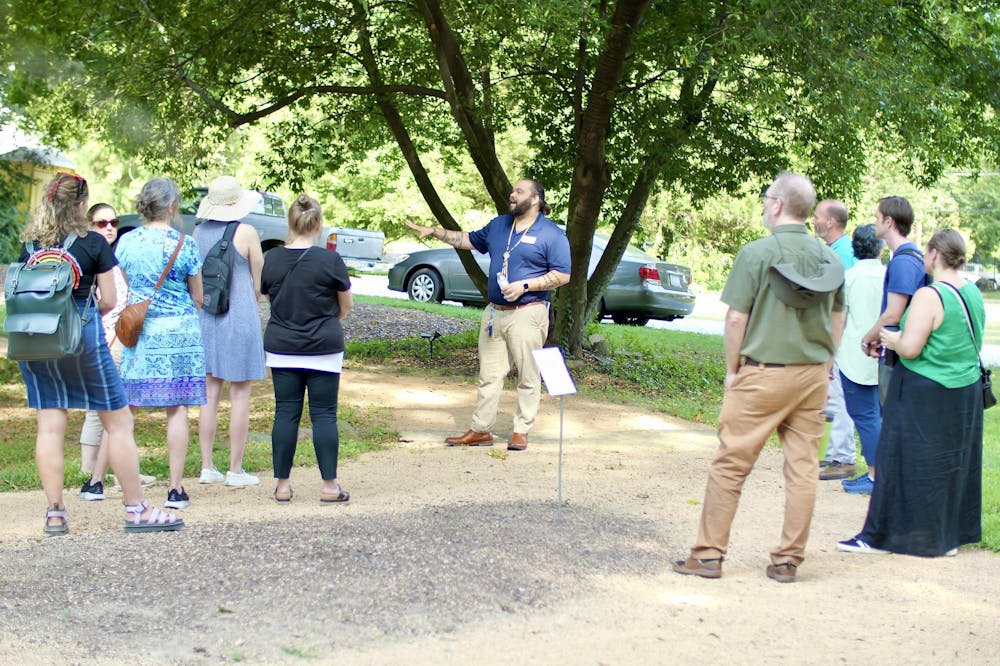On Wednesday, August 28, the American Indian Center (AIC) held a Native Narrative Tour, which highlighted the impact that Indigenous people have had on UNC.
Around a dozen people gathered in front of the AIC at 10 a.m. Marissa Carmi, the associate director of the AIC and a citizen of the Oneida Nation of Wisconsin, said that she viewed the tour as an opportunity to attract a wide variety of participants interested in learning about the history of Native Americans at UNC.
“We're excited to host this tour and excited that it drew people from across campus. It'll serve as an introduction to people who are unfamiliar with the center, but also a reintroduction for people who maybe are familiar with the center, but not how it fits within a larger history of the Native presence at UNC,” she said.
Carmi also said that the AIC has offered tours before and that they even have a virtual tour available on their website. However, the AIC has gone through some changes recently, including moving locations in 2019, and Carmi said that she wanted the new tour to include this information.
One recent change is the introduction of the American Indian Cultural Garden, located across from the AIC building.
“Having physical space again here on this campus and being able to grow these plants that have such a big significance to Native people in their medicine, their ammonia plants, and being able to have them right here in Carolina is a big deal,” the tour guide, Ryan Dial, said.
Dial is a citizen of the Lumbee tribe and works at both the AIC and the UNC Lineberger Cancer Center, which he said is a testament to the interdisciplinary nature of Native American studies. He is a member of the Carolina Indian Circle, and also attended UNC as an undergraduate, where he was a member of the Native American fraternity Phi Sigma Nu.
While Dial led the tour group across campus, he spoke about the multitude of ways that Native Americans have made their presence known at the University.
One stop was the Henry Owl Building, which was named after Henry McClain Owl, the first Native American to enroll at UNC. Owl earned a Master’s degree in history in 1929 and testified before Congress about the discrimination he faced as a Native American in North Carolina, including being denied the right to vote in 1930.




